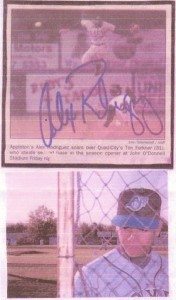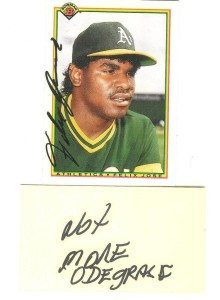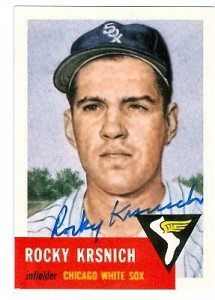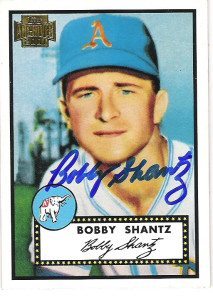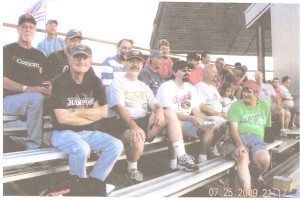
Yesterday, Rich Hanson noted his beginnings as an autograph collector. Today, he has some advice:
Q: Do you think you have more luck with minor leaguers than retired big leaguers?
A: I’ve had a lot of good minor league responses. I still have the note that Jason Isringhausen wrote back along with the cards he signed; a real kind note telling me how much my letter moved him. Many times, a player will include a minor league team issue card or a short note at the minor league level. I regret that’s becoming rarer and rarer though. Between dealers selling autographs on EBay and TriStar hosting prospects at shows and charging major league prices; even at the college level a player may not sign now. I struck out with both Stephen Strasburg at San Diego State and Bryce Harper at Southern Nevada. The hobby has become a business for many people.
Q: Do you have hobby advice to share?
A: For through-the-mail collectors, do your homework and be creative. A player is more apt to sign if you send him something unique and/or homemade like an 8-by-10 collage or homemade card. He knows he’s not as likely to see it on Ebay.
Hand-write your letters. I firmly believe you get a better response. Don’t send anything out you are afraid to lose. Odds are that’s the item you won’t get back.
TTM is fun, but it doesn’t match getting signatures in person. Minor league baseball is affordable and fun. Support your local minor league team.
Every autographer, whether TTM or in-person, should have Baseball America’s Baseball Directory in their possession. Next to your pen and address book, it will be your most valuable resource.
Last of all, I wouldn’t be able to enjoy this hobby as much without the following: the players, coaches and managers who are kind enough to take the time to accommodate our requests. My wife Nancy, who helps me immensely and never (ahem, rarely) grumbles. She’s wise enough to realize that there are worse places for a guy to want to hang out than in a ballpark. Mike Kirkman and Dale Roberson, both of whom taught me a lot of fine points of the hobby. The Burlington Bees staff. They usually give me a heads-up when a roving instructor shows up. Rick and Jennifer Ryan and the graphers in Des Moines, who always are helpful and make me feel welcome at Sec Taylor Stadium, and Angie, Chuck and Joyce, who are just as helpful in Clinton. The OACC autograph ring that I belong to is very supportive and knowledgeable as well. So many more, Ian in Cedar Rapids, Dave Malamut and Tom from Kane County. You get the idea.”
The idea is simple but powerful. Share this hobby with anyone you can. Work together. Build your team. When your hobby teammates come through, thank them in word and deed. Thanks for the insights, Rich!
(That’s Mr. Hanson, complete with “Otis Campbell’s” T-shirt, on the bottom row at a Burlington Bees minor league game. His baseball buddies have dubbed themselves “The Family Section.”)

